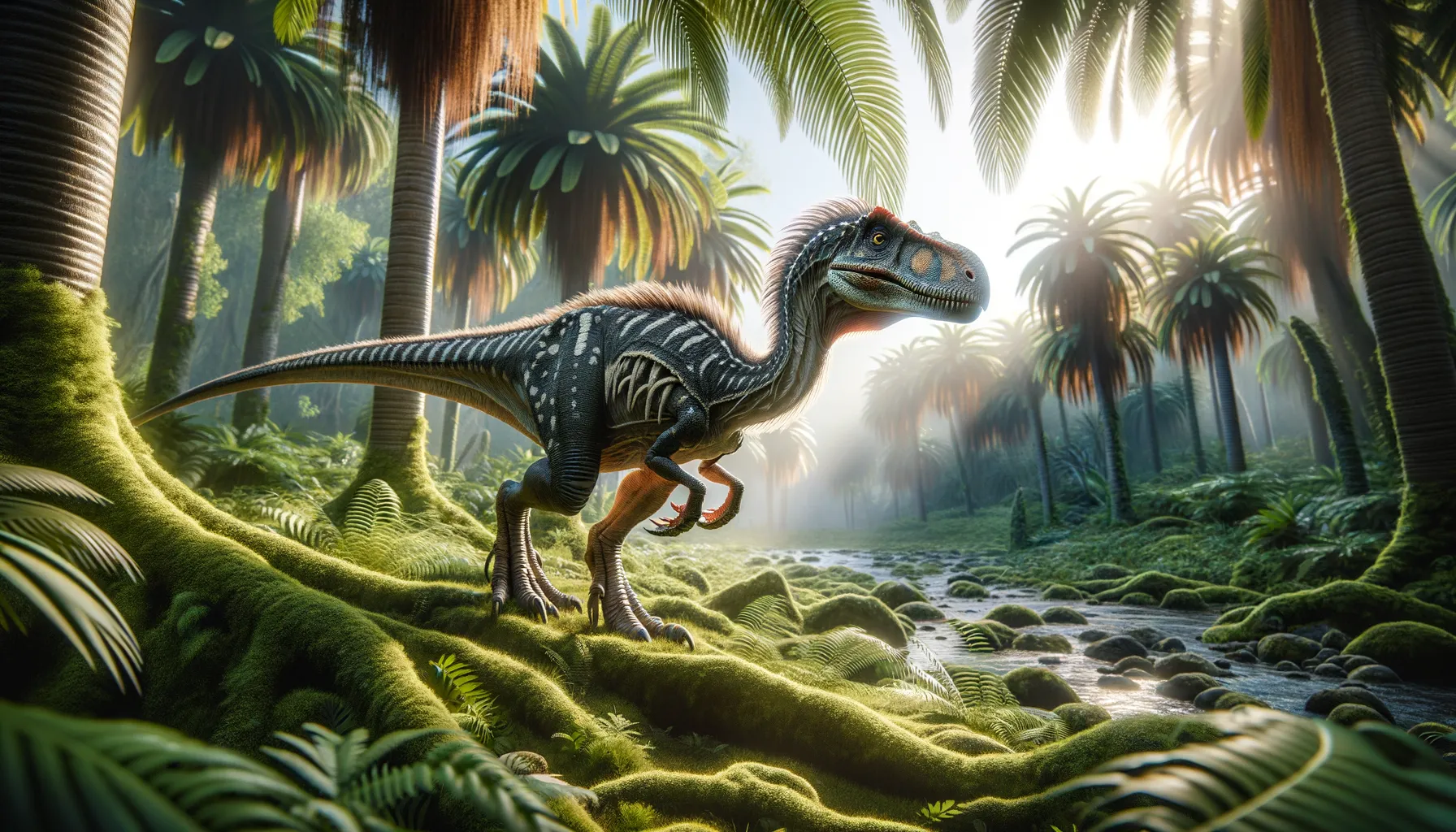
Aristosuchus
Noble predator of the Cretaceous era.
Period
Cretaceous
Length
About 2 to 3 meters in length.
Height
Approximately 1 meter tall at the hips.
Weight
Estimated to weigh around 30 kilograms.
Aristosuchus was a small theropod dinosaur from the early Cretaceous period. This agile predator boasted long legs and a light, bird-like skeleton that made it an effective hunter. Known primarily from fossils in England, Aristosuchus provides insight into the diversity of theropod dinosaurs. The name, meaning 'noble crocodile,' reflects the initial confusion about its classification. Despite its relatively unknown status, it plays a significant role in understanding dinosaur evolution.
Diet
Aristosuchus was a carnivore, feeding on small reptiles and possibly insects. Its sharp teeth and agile body suggest it was well-adapted to catching quick-moving prey.
Hunting
This dinosaur likely relied on stealth and speed for hunting. With keen senses, it could track down small animals and use its sharp claws for capturing prey.
Environmental challenges
Living during the dynamic Cretaceous period, Aristosuchus faced fluctuating climates and competition from other small predators. Adapting to these challenges would have involved exploiting various food sources. Predators and climate shifts demanded flexibility and adaptability from this small creature.
Speed
Moderately fast runner due to its light build.
Lifespan
Lifespan likely similar to other small theropods.
First discovery
Discovered in 1876 by Richard Owen in England.
Fun Facts
- Aristosuchus was a small, bird-like dinosaur that lived during the Early Cretaceous period, about 130 million years ago.
- Its name means 'best crocodile,' although it was not related to modern crocodiles.
- Aristosuchus was a theropod dinosaur, a group that includes the famous Tyrannosaurus rex.
- This dinosaur was a carnivore and likely fed on small animals and insects.
- Aristosuchus fossils were first discovered in England, making it an intriguing part of British paleontological history.
- Despite its small size, Aristosuchus was likely a fast and agile predator.
- It was first named in 1887 by renowned British paleontologist Richard Lydekker.
Growth and Development
Juveniles likely grew rapidly to reach predator-avoiding sizes. These dinosaurs might have gone through several growth spurts, supported by an ample diet. Fossil evidence hints at their development stages paralleling modern birds.
Habitat
Aristosuchus lived in areas with diverse ecosystems, ranging from floodplains to forested regions. Its environment was lush and provided ample food resources. Fossil finds suggest a preference for well-watered habitats.
Interaction with other species
Aristosuchus shared its environment with other small theropods, possibly competing for similar prey. Its interactions likely included both competition and avoidance behaviors. Fossil evidence of multiple species in its region indicates a complex web of ecological interactions.
Natural lifespan
Comparable to other small theropods, around 10 to 15 years.
Reproduction
It probably reproduced like many other small theropods, laying eggs in nests. Paired with parental care, this would have helped increase offspring survival rates. Nesting sites were likely simple, built in safe areas away from predators.
Social behaviour
Aristosuchus may have been solitary or lived in small groups. Social interactions could have included cooperative hunting strategies or mating displays. Competition among rivals might have led to confrontations or displays of dominance.
Fossil locations
Fossils of Aristosuchus have primarily been found in England. These discoveries have helped paleontologists piece together its lifestyle and ecology. Excavations have provided significant insights into the diversity of small theropods in the early Cretaceous ecosystems.
